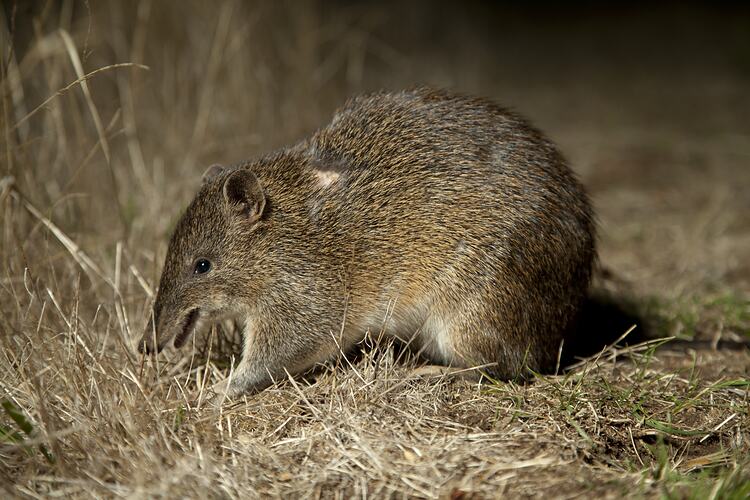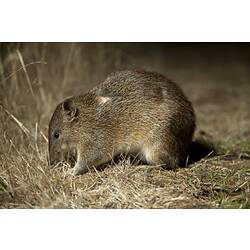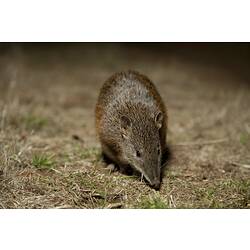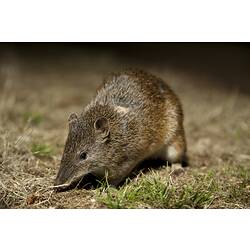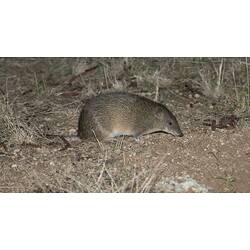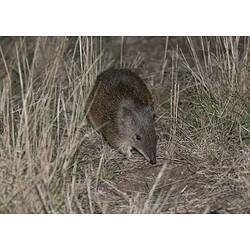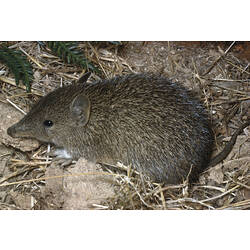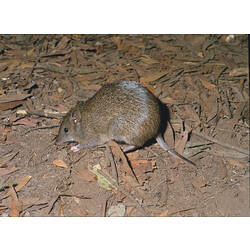General Description
Body fur brown-grey on back and paler underneath. Face cone-shaped. Short forelegs and long hindlegs. Body up to 35 cm, tail up to 13 cm.
Biology
Southern Brown Bandicoots are mostly active at night. They dig narrow, cone-shaped holes in the soil in search of insects, fleshy plant roots (tubers) and fungi. There are five subspecies of Southern Brown Bandicoot. One occurs across several states but most are restricted to smaller areas. Most of these subspecies are considered to be vulnerable or threatened through at least part of their range and one is listed as endangered.
Distribution
South-eastern, south-western and north-western mainland Australia and Tasmania.
Habitat
Woodland and forest with heath or shrub understorey, also coastal heath and scrub.
More Information
-
Animal Type
-
Animal SubType
-
Brief Id
Brown, cone-shaped nose, short tail.
-
Colours
Brown
-
Habitats
-
Where To Look
-
When Active
Nocturnal
-
Diet
Omnivore
-
Diet Categories
Insects, Arthropods, Fungi
-
Endemicity
-
Conservation Statuses
CITES: Not listed, FFG Threatened List: Endangered, EPBC Act 1999: Endangered, IUCN Red List: Least concern
-
Taxon Name
-
Scientific Author
(Shaw, 1797)
-
Common Name
Southern Brown Bandicoot
-
Kingdom
-
Phylum
-
Subphylum
-
Class
-
Superorder
-
Order
-
Family
-
Subfamily
-
Genus
-
Species Name
obesulus
